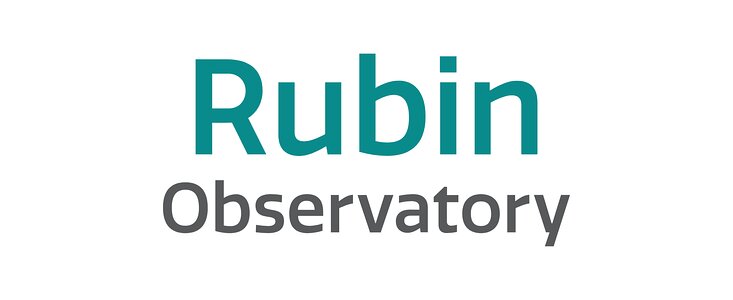Rubin Digest 12 February 2020
12 February 2020
Project & Science News
On Cerro Pachón, the Auxiliary Telescope (AuxTel) spectrograph took its first on-sky images on January 27th. The AuxTel team was able to take data in all modes (both imagery and using dispersers). Reaching this milestone involved multiple Project members across the Telescope & Site, Data Management, and Camera teams over a period of years. The images collected also represent a significant milestone for system integration and commissioning efforts, as this system provides a realistic platform where all teams will continue to develop, deploy, and test their software; train personnel; and develop the operational environment and culture prior to commissioning the main observatory components.
In early February, a combined team from Rubin Observatory, Asturfeito, and Burger Cranes successfully installed the Telescope Mount Assembly’s two main supports and the keel beam (which links the supports) inside the summit facility. The pieces were lifted through the observatory dome using the 500-ton crane. Photos are available in the Gallery. Assembly of the TMA will continue over the coming months.
The campaign for the configuration of the Coating Plant with the surrogate Primary/Tertiary Mirror (M1M3) and the production of coating samples was successfully completed in early February. The samples (protected silver, protected aluminum, and bare aluminum) are now undergoing an aging reflectivity test campaign to determine which coating material performs best over time. The M1M3 cell and surrogate are still under the coating plant, and work is resuming inside the cell in preparation for integration of the thermal system. Photos from the coating sample campaign are available in the Gallery.
Progress on the Rubin Observatory Legacy Survey of Space and Time observing strategy continues with an updated set of FBS (FeatureBased Scheduler) runs released in January. Details on the release are available at this link. Over the next few months, the scheduler team will be setting up for their (likely) final set of simulations before writing their advisory report. These final runs will contain a series of potential baseline survey strategies, combining various aspects of the strategies investigated individually so far. Feedback on metrics or survey strategies is requested by the end of March, preferably via the Survey Strategy section of community.lsst.org.
The Project Science Team (PST) had a face-to-face meeting in Tucson on January 24-25. In addition to construction progress reports by the Subsystem Scientists and Systems Engineering, Rubin Observatory Chief Scientist Tony Tyson reported on ongoing work with SpaceX to mitigate the impact of Starlink satellite constellations. The meeting report is publicly available in Docushare Collection-7059.
A meeting of the Dark Energy Science Collaboration (DESC) took place in Tucson, AZ on January 20-24. The meeting was a great opportunity for productive interaction between Rubin Observatory Project and DESC members. System Scientist Chuck Claver presented on Construction status, Operations Director Bob Blum gave an Operations update, and Head of Education and Public Outreach (EPO) Amanda Bauer gave a presentation on EPO products in development and opportunities for collaboration with DESC. Data Management team DESC liaisons Leanne Guy, Wil O’Mullane, and Robert Lupton participated in discussions about opportunities for collaboration, including combining forces on QA (Quality Assurance) tooling.
Registration is now open for LSST@Europe4—Shaping the European Contribution to LSST, which will be held June 8-12, 2020, in Rome, Italy. The deadline to register is March 15th. More information is available at this link.
Information for Project Members
The Informatics and Statistics Science Collaboration (ISSC) invites Project members to take advantage of the LSSTC Slack channel #ask-the-issc for questions related to the use and interpretation of statistical and machine learning methods, and to data science more generally, from basic to advanced. The ISSC hopes to use this channel for a range of purposes, from helping with quick questions to facilitating discussions about shared data science challenges across Rubin Observatory.
Personnel News
The Data Management team welcomes Russ Allbery, who began work in the role of Science Platform Security Architect on January 28th. Russ will be joining the SQuaRE Data Management team and will be focusing on security engineering for the LSST Science Platform and other SQuaRE-authored services, as well as contributing to SQuaRE's underlying services infrastructure.
Kevin Deptula also joined the Data Management team as Project Manager on January 23rd. Based at the National Center for Supercomputing Applications (NCSA), Kevin will be in charge of keeping the Jira ticket, NCSA ticket, and P6 project environment packages up to date, while managing the milestones and updates of work completed by the team at NCSA.
Upcoming Meetings with Rubin Observatory Involvement
(those with asterisk* are LSSTC funded):
2020
March 17-19: Rubin Observatory Algorithms Workshop, Princeton, NJ
April 14-16: Operations Proposal Review, Tucson, AZ
April 14-16: NSF Large Facilities Workshop, Alexandria, VA
April 27-29: Supernovae Across LSST, Urbana-Champaign, IL*
June 4-19: SPIE Astronomical Telescopes and Instrumentation Conference, Yokohama, Japan
August 10-14: Rubin Observatory Project and Community Workshop 2020, Tucson, AZ


